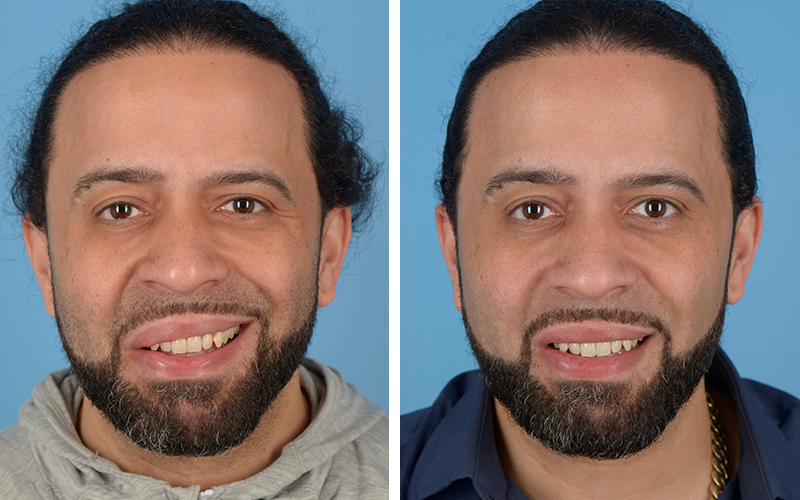Otolaryngology–Head and Neck Surgery
Synkinesis
Overview
Synkinesis is abnormal facial nerve regeneration that results in involuntary movement patterns in your facial muscles. In simple terms, synkinesis is a misdirected, rewiring, of the facial nerve after a facial nerve insult.
For example, when you smile, your affected eye involuntarily closes at the same time. Synkinesis occurs as the facial nerve recovers from injury, but in a disorganized fashion. In this example, nerve fibers that originally traveled only to the mouth to make you smile, are now routed to both the mouth and the eye.
The result of this is involuntary eye closure with mouth movements such as smiling, eating and speaking. Synkinesis can be mild or severe.
Common Causes
Synkinesis can occur after any facial nerve injury where the nerve remains in continuity (e.g. Bell’s palsy, vestibular schwannoma resection, Ramsay Hunt syndrome) or after nerve repair or transfer surgeries.
Treatment Options
Synkinesis is treated with facial rehabilitation strategies including massage, relaxation and specific neuromuscular re-education. It is important to understand the role of synkinesis as you try to move your face. Synkinesis can be thought of as a tug of war. The synkinetic muscles are strong and overpower the weaker facial muscles. One of the goals of facial rehabilitation is to teach you how to relax or dampen the synkinetic muscles, so the weak muscles function better. Once patients have had facial nerve therapy, we often use botulinum toxin to weaken the synkinetic muscles – otherwise known as chemodenervation. Chemodenervation and facial nerve therapy are synergistic in that together they help patients more than either therapy alone.

Our Team
The Facial Nerve Center is staffed by surgeons, physical therapists, physician assistants and other medical specialists skilled in the evaluation and treatment of facial paralysis. Our team includes Kerry Shanley Camp, PA-C, Madeline Macaluso, FNP-BC, Julia Mellon, NP-C, Julia Cambria, NP-C, and Mara Robinson, PT, MS. This combination of medical expertise allows us to help patients improve their appearance, facial function, non-verbal communication and overall well-being.

